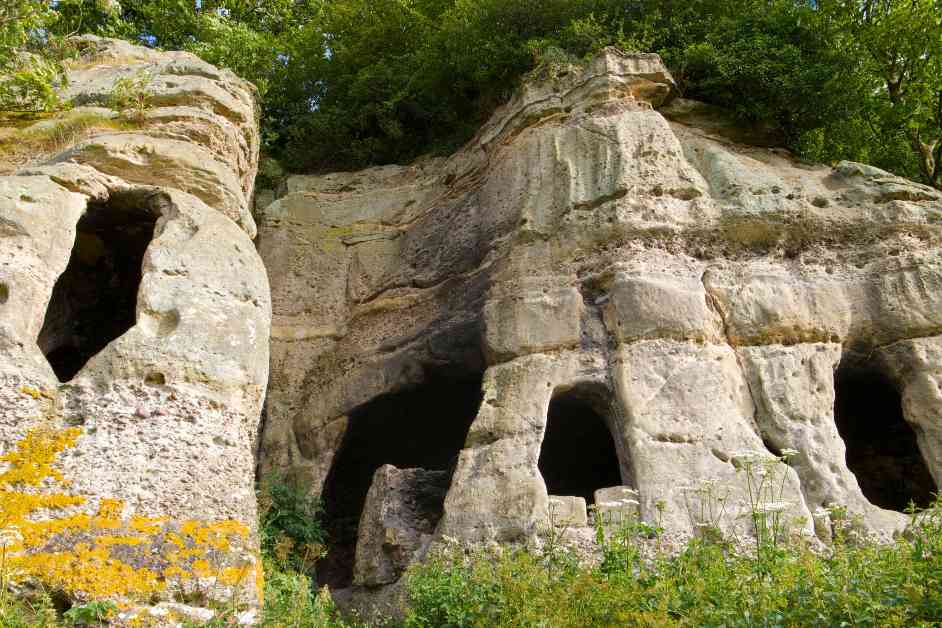Simons and his team of researchers recently delved into the depths of an ancient British cave dwelling once inhabited by an exiled king. Through a combination of drone surveys and detailed architectural analysis, they were able to uncover the original layout of the caves, which bore a striking resemblance to other Saxon structures. The caves, comprised of three rooms and an east-facing chapel, offered a glimpse into the past and shed light on the living conditions of the time.
In the 18th century, the Anchor Church caves underwent a transformation at the hands of English aristocrat Sir Robert Burdett. Seeking to create a unique space for hosting dinners with friends, he oversaw renovations that included widening entrances, adding brickwork, and installing window frames. The result was a cool and elaborate setting that served as a testament to Burdett’s vision and creativity.
According to Simons, the intact domestic buildings from the Saxon era are a rare find, with cave dwellings potentially being the only surviving examples. This discovery opens up a world of possibilities for further exploration and research into this fascinating period of history. In fact, the team has identified 20 other cave houses in west-central England that may also date back to the 5th century, hinting at a broader network of similar structures waiting to be unearthed.
As the team continues their work, they remain hopeful that more examples of Anglo-Saxon architecture will come to light, offering invaluable insights into the lives and customs of our ancient ancestors. The caves stand as a testament to the ingenuity and resourcefulness of those who called them home, providing a window into a world long gone but not forgotten.
Exploring the Anchor Church caves and the story of Sir Robert Burdett’s renovations offers a unique glimpse into a bygone era. By piecing together the puzzle of the past, researchers like Simons are able to paint a vivid picture of life in ancient Britain and the remarkable structures that have stood the test of time. With each new discovery, we come one step closer to understanding our history and the legacy left behind by those who came before us.
